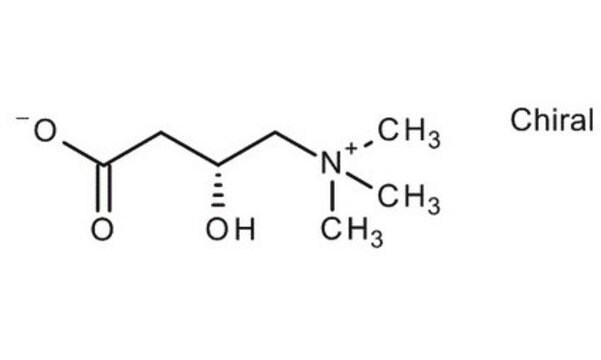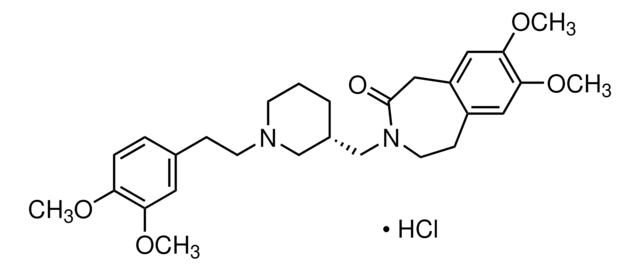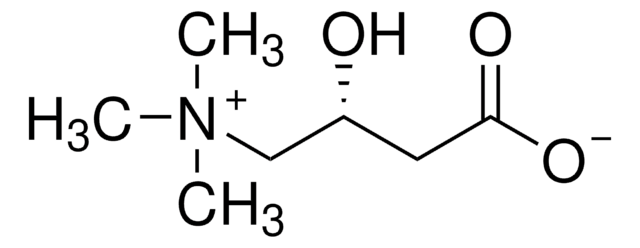Z0127
Zatebradine hydrochloride
≥98% (HPLC), powder
Synonym(s):
7,8-Dimethoxy-3-[3-[-N-[2-(3,4 dimethoxyphenyl)ethyl]-N-methylamino]propyl]-1,3,4,5-tetrahydro-2H-3-benzazepin-2-one hydrochloride, UL-FS49
About This Item
Recommended Products
Quality Level
assay
≥98% (HPLC)
form
powder
storage condition
desiccated
color
white
solubility
H2O: >10 mg/mL
originator
Boehringer Ingelheim
storage temp.
2-8°C
SMILES string
Cl[H].COc1ccc(CCN(C)CCCN2CCc3cc(OC)c(OC)cc3CC2=O)cc1OC
InChI
1S/C26H36N2O5.ClH/c1-27(13-9-19-7-8-22(30-2)23(15-19)31-3)11-6-12-28-14-10-20-16-24(32-4)25(33-5)17-21(20)18-26(28)29;/h7-8,15-17H,6,9-14,18H2,1-5H3;1H
InChI key
ZRNKXJHEQKMWCH-UHFFFAOYSA-N
Application
- as an If blocker to study its effects on cardiomyocyte clusters (CMCs)
- as a hyperpolarization-activated and cyclic nucleotide-gated (HCN) channel inhibitor to study its effects on viability of degenerating rod or cone photoreceptors in mice
- as a bradycardiac agent to study its effects on tachycardia and elevated temperature in fish
Biochem/physiol Actions
Features and Benefits
Storage Class
11 - Combustible Solids
wgk_germany
WGK 3
flash_point_f
Not applicable
flash_point_c
Not applicable
ppe
Eyeshields, Gloves, type N95 (US)
Choose from one of the most recent versions:
Certificates of Analysis (COA)
Don't see the Right Version?
If you require a particular version, you can look up a specific certificate by the Lot or Batch number.
Already Own This Product?
Find documentation for the products that you have recently purchased in the Document Library.
Related Content
Cyclic nucleotides, including cyclic AMP (cAMP), cyclic GMP (cGMP) and cyclic ADP-ribose, have been extensively studied as second messengers of intracellular events initiated by activation of GPCRs. cAMP modifies cell function in all eukaryotic cells, principally through the activation of cAMP-dependent protein kinase (PKA), but also through cAMP-gated ion channels and guanine nucleotide exchange factors directly activated by cAMP.
Our team of scientists has experience in all areas of research including Life Science, Material Science, Chemical Synthesis, Chromatography, Analytical and many others.
Contact Technical Service








